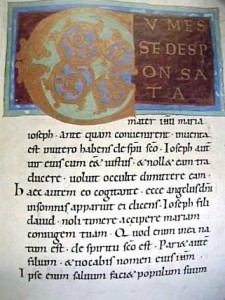by Maurice A. Robinson
Principles to be Applied toward Restoration of the Text
 The Byzantine-priority position (or especially the so-called “majority text” position) is often caricatured as only interested in the weight of numbers and simple “nose-counting” of MSS when attempting to restore the original form of the NT text. Aside from the fact that such a mechanical and simplistic method would offer no solution in the many places where the Byzantine Textform is divided among its mass of witnesses, such a caricature leads one to infer that no serious application of principles of NT textual criticism exist within such a theory. This of course is not correct. There are external and internal criteria which characterize a Byzantine-priority praxis, and many of these closely resemble or are identical to the principles espoused within other schools of textual restoration. Of course, the principles of Byzantine-priority necessarily differ in application from those found elsewhere.
The Byzantine-priority position (or especially the so-called “majority text” position) is often caricatured as only interested in the weight of numbers and simple “nose-counting” of MSS when attempting to restore the original form of the NT text. Aside from the fact that such a mechanical and simplistic method would offer no solution in the many places where the Byzantine Textform is divided among its mass of witnesses, such a caricature leads one to infer that no serious application of principles of NT textual criticism exist within such a theory. This of course is not correct. There are external and internal criteria which characterize a Byzantine-priority praxis, and many of these closely resemble or are identical to the principles espoused within other schools of textual restoration. Of course, the principles of Byzantine-priority necessarily differ in application from those found elsewhere.
The Byzantine-priority principles reflect a “reasoned transmissionalism” which evaluates internal and external evidence in the light of transmissional probabilities. This approach emphasizes the effect of scribal habits in preserving, altering, or otherwise corrupting the text, the recognition of transmissional development leading to family and texttype groupings, and the ongoing maintenance of the text in its general integrity as demonstrated within our critical apparatuses.
The overriding principle is that textual criticism without a history of transmission is impossible.
To achieve this end, all readings in sequence need to be accounted for within a transmissional history, and no reading can be considered in isolation as a “variant unit” unrelated to the rest of the text.
In this system, final judgment on readings requires the strong application of internal evidence after an initial evaluation of the external data has been made. Being primarily transmissionally-based, the Byzantine-priority theory continually links its internal criteria to external considerations. This methodology always asks the prior question: does the reading which may appear “best” on internal grounds (no matter how plausible such might appear) really accord with known transmissional factors regarding the perpetuation and preservation of texts? Such an approach parallels Westcott and Hort, but with the added caveat against dismissing the Byzantine Textform as a significant transmissional factor. Indeed, the present theory in many respects remains quite close to that of Westcott and Hort; the primary variance is reflected in certain key assumptions and a few less obvious principles.
Because of these initial considerations, the conclusions regarding the original form of the NT text will necessarily differ significantly from those of Westcott and Hort.
Part Five will be published July 11th.
This excellent article is reprinted with permission of TC: A Journal of Biblical Textual Criticism .
© TC: A Journal of Biblical Textual Criticism, 2001.
